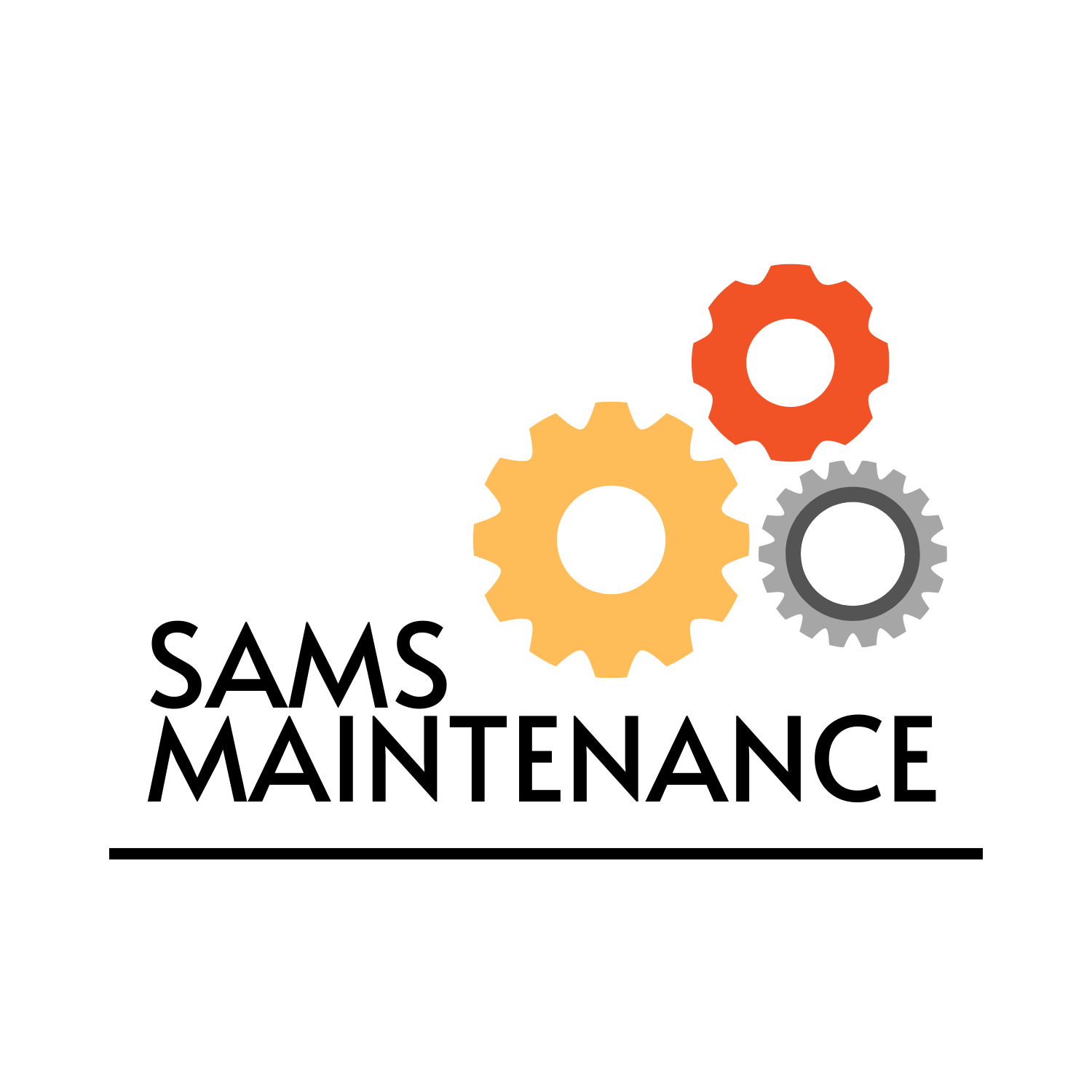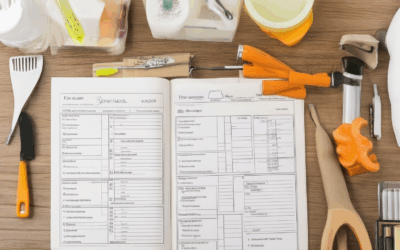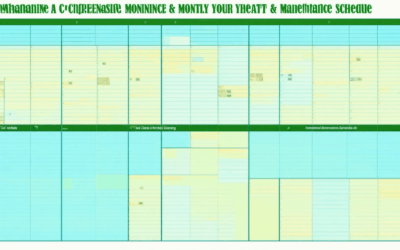Are you ready to unlock the key to effective preventative home maintenance tips? Keeping your home in top shape doesn’t have to be overwhelming when you know the right strategies. Whether you’re a seasoned homeowner or new to the game, understanding the best practices for maintaining your property can save you time, money, and stress in the long run. From identifying the 10 critical rules to exploring the 3 Ps of maintenance, this guide offers a comprehensive overview of what you need to know. Discover how to prioritize tasks, evaluate factors, and implement a plan that works for your lifestyle. With the right approach, you can ensure your home stays healthy and functional for years to come. Let’s dive in and explore the essential tips that every homeowner should know!
Key Takeaways
- Regularly schedule preventative maintenance to prevent issues before they arise and ensure equipment longevity.
- Invest in high-quality tools and equipment for efficient and safe operations.
- Always adhere to manufacturer guidelines for optimal performance and safety.
- Use monitoring systems to track equipment health and catch potential problems early.
- Plan your budget carefully to fund routine maintenance and avoid costly repairs.
- Train your team to understand the importance of preventative maintenance practices.
- Keep detailed records of all maintenance activities for future reference and analysis.
- Regularly inspect components for signs of wear and tear to prevent unexpected failures.
- Consult professional technicians when unsure to ensure specialized advice and services.
- Familiarize yourself with the four types of preventative maintenance: scheduled, predictive, random, and condition-based, to tailor your approach to your specific needs.

What is the 10 Rule of Preventive Maintenance?
The 10% Rule of Preventive Maintenance is a simple yet effective strategy to ensure your equipment and systems operate optimally. The rule states that all preventive maintenance activities should be completed within 10% of the due date based on your maintenance schedule. This approach helps in catching potential issues before they escalate and ensures minimal downtime.
Why the 10% Rule Works
- Regular Check-Ups: Performing maintenance tasks consistently helps identify and fix problems early, which can prevent costly breakdowns later.
- Predictable Schedule: By sticking to a routine, you can better plan your time and resources, leading to improved productivity.
Benefits of Following the 10% Rule
- Extends Equipment Life: Regular inspections and servicing can significantly prolong the lifespan of your machinery and systems.
- Reduces Downtime: Proactive maintenance often reduces the likelihood of unexpected failures, minimizing production interruptions.
- Cost Efficiency: Addressing issues early can save money on expensive repairs and replacements.
- Safety: Preventive maintenance helps identify safety hazards, ensuring a safer working environment.
How to Implement the 10% Rule
- Set up a consistent maintenance schedule tailored to your equipment and facility needs.
- Prioritize tasks that align with the 10% rule, focusing on critical areas first.
- Train your team to adhere to the rule and emphasize its importance during training sessions.
- Use tools and software to track maintenance progress and ensure compliance.
By adopting the 10% Rule of Preventive Maintenance, you can enhance operational efficiency, reduce risks, and maintain peak performance for your assets. For more insights and resources on home maintenance techniques, visit our maintenance guide .
What Are the 3 P’s of Maintenance?
The three Ps of maintenance—Preventative, Predictive, and Prescriptive—are essential strategies for ensuring optimal equipment functionality and longevity. Each approach plays a unique role in maintaining systems effectively.
1. Preventative Maintenance
Preventative maintenance focuses on routine checks and servicing to prevent breakdowns before they occur. This involves regular inspections, replacements, and adjustments to components that are likely to fail. By addressing issues early, organizations can reduce downtime and extend asset life. Examples include changing oil filters, replacing worn-out belts, and conducting safety inspections.
- Regular inspections to catch potential issues early.
- Replacement of worn parts before failure occurs.
- Scheduled services to maintain peak performance.
2. Predictive Maintenance
Predictive maintenance uses data analytics and sensors to monitor equipment health in real-time. By analyzing factors like vibration, temperature, and pressure, predictive maintenance can identify impending failures before they happen. This approach allows for proactive planning, reducing unexpected downtime and extending equipment lifespan.
- Monitoring through sensors and data analytics.
- Alerts for potential issues based on abnormal patterns.
- Planned interventions to prevent failures.
3. Prescriptive Maintenance
Prescriptive maintenance involves solving specific problems with targeted solutions. It requires a deeper understanding of the root cause of failures and implementing tailored fixes. This method is particularly effective for complex systems where standard maintenance practices may not suffice.
- Diagnosis of the underlying issue causing failures.
- Implementation of customized solutions.
- Focus on long-term reliability and efficiency.
By combining these three approaches, organizations can achieve maximum uptime, productivity, and operational efficiency. Each strategy complements the others, forming a comprehensive maintenance plan tailored to meet specific needs.

What is the 1 rule for home maintenance?
The 1% rule for home maintenance is a popular guideline that suggests setting aside 1% of your home’s purchase price for annual repairs and maintenance. However, in today’s market, this percentage may need adjustment due to inflation and rising costs.
- The 1% Rule Adjusted for Today’s Market: While the traditional 1% rule is a good starting point, it’s essential to adjust it based on your local cost of living and the current state of your home. Consider factoring in inflation, labor costs, and material prices when allocating your budget.
- Regular System Inspections: Schedule routine checks for major systems like HVAC, plumbing, and electrical components. This helps catch potential issues early and ensures everything runs smoothly.
- Professional Home Inspection: A professional inspector can identify hidden problems that might otherwise go unnoticed. This is a smart investment in your home’s longevity.
- Check for Leaks and Damage: Regularly inspect for signs of water leaks, rot, or structural damage. Addressing these issues promptly can prevent costly repairs down the line.
- Test Emergency Systems: Make sure your smoke detectors, carbon monoxide detectors, and fire alarms are functioning properly. These systems are critical for protecting your family and property.
For more detailed guidance and professional services, visit Sams Maintenance . Their experts provide comprehensive home maintenance solutions tailored to your needs.

What Are the 10 Factors to Consider in Performing Preventive Maintenance?
Preventive maintenance is a critical aspect of ensuring the longevity and efficiency of machinery, vehicles, and equipment. Here are 10 essential factors to keep in mind:
- Regular Schedule:** Establish a consistent schedule for preventive maintenance to prevent issues before they arise. This ensures ongoing reliability and performance.
- Tools and Equipment:** Maintain high-quality tools and equipment to perform tasks efficiently and safely. Proper tools extend the lifespan of your equipment.
- Manufacturer Recommendations:** Adhere to the manufacturer’s guidelines and specifications to ensure optimal performance and safety.
- Environmental Conditions:** Consider environmental factors such as temperature, humidity, and dust that may affect equipment performance.
- Monitoring Systems:** Utilize monitoring systems to track equipment health and identify potential issues early.
- Budget Constraints:** Plan and allocate funds for routine maintenance to avoid costly repairs later. Prioritize based on usage and risk level.
- Training Employees:** Ensure your team is trained and understands the importance of preventive maintenance practices.
- Record Keeping:** Keep detailed records of maintenance activities, schedules, and parts replaced for future reference and analysis.
- Inspect for Wear and Tear:** Regularly inspect components for signs of wear and tear to replace them before they fail.
- Consult Professionals:** If unsure, consult professional technicians or mechanics for specialized advice and services.
By considering these factors, you can implement an effective preventive maintenance plan tailored to your specific needs. For more detailed guidance and resources, visit our preventive maintenance guide .
Five Important Tasks for a Preventive Maintenance Plan
To ensure optimal performance and longevity of equipment, a well-structured preventive maintenance plan should include the following essential tasks:
- Regular Equipment Inspections: Conduct thorough visual inspections, functional tests, and review maintenance logs to identify potential issues before they escalate.
- Lubrication and Cleaning: Apply appropriate lubricants to moving parts and clean surfaces to prevent rust and debris buildup, ensuring smooth operation.
- Parts Replacement: Replace worn-out components, such as belts, filters, and bearings, at recommended intervals to maintain efficiency and prevent failures.
- Process Review and Optimization: Engage with operators to evaluate workflows and implement improvements, ensuring adherence to safety protocols and best practices.
- Documentation and Record Keeping: Maintain detailed records of all maintenance activities, including schedules, parts used, and observations, to track progress and facilitate future planning.

What Are the 4 Types of Preventive Maintenance?
Preventive maintenance is a proactive approach to ensuring the longevity and efficiency of systems, equipment, and structures. It involves regular checks, inspections, and interventions to prevent breakdowns and issues before they occur. Below are the four primary types of preventive maintenance:
- Scheduled Maintenance : This type involves regularly planned maintenance tasks, such as oil changes, filter replacements, and tire rotations, based on manufacturer recommendations or industry standards. These routines help maintain optimal performance and extend the lifespan of equipment or vehicles.
- Predictive Maintenance : Predictive maintenance uses diagnostic tools and monitoring systems to identify potential issues before they become critical. Techniques like vibration analysis, thermal imaging, and machine learning algorithms help predict failures, allowing for timely repairs or adjustments.
- Random Preventive Maintenance : This approach involves inspecting and testing components at random intervals, often based on usage patterns or statistical analysis. It’s particularly useful for infrequently used equipment or systems where wear isn’t easily predictable.
- Condition-Based Maintenance : This type relies on monitoring the condition of equipment through sensors and analytics. When a component shows signs of wear or degradation, maintenance is scheduled to replace or repair it. This method reduces downtime by addressing issues only when necessary.
By implementing these maintenance strategies, individuals and organizations can reduce operational costs, minimize unexpected failures, and ensure the reliability of their assets. For more detailed guidance and resources on home maintenance, visit our maintenance guides .




0 Comments